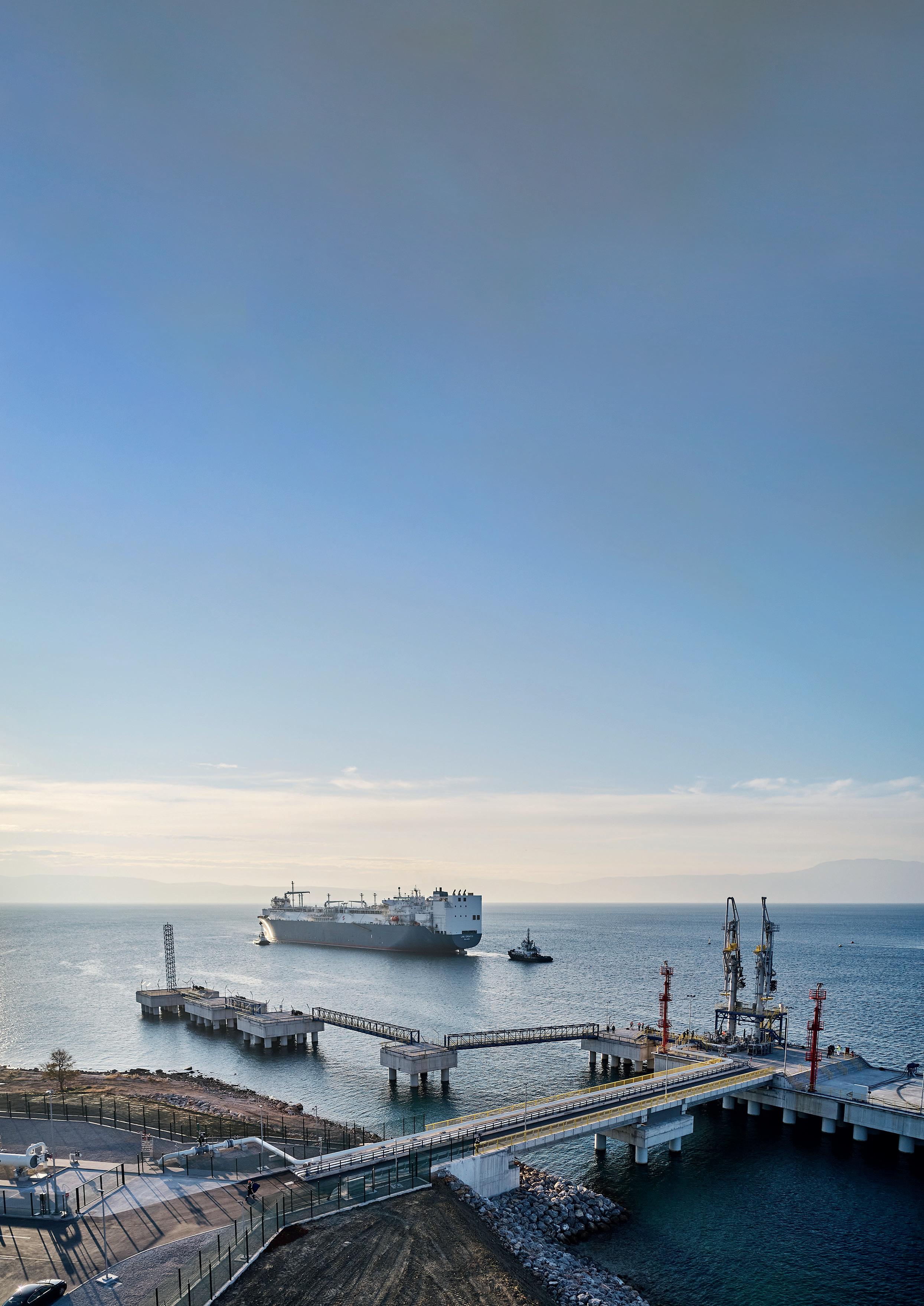
8 minute read
A new gateway for LNG
Marko Grbić, Siniša Kovač, Dario Ferenčaba, and Marko Častek, LNG Croatia, Croatia, showcase the design elements of the Island of Krk’s LNG Terminal, a project which is helping to increase the energy independence of Croatia.
he commissioning of the LNG Terminal on the Island of Krk at the end of 2020 and the arrival of the first LNG carrier at the beginning of 2021 marked a new era of natural gas market development and energy independence in the Republic of Croatia. The Terminal has a geopolitical and strategic dimension in the context of strengthening the European energy market by meeting its energy demands and increasing secure and reliable supply through the new natural gas route. This article will describe the Terminal’s design through several interconnected elements which form one strong and reliable unit.
The main elements of the Terminal
Construction of the Terminal lasted from April 2019 to December 2020 when it was successfully commissioned. The Terminal consists of several main elements while the process of regasification takes place on the FSRU vessel LNG Croatia. After the LNG is converted from a liquefied to a gaseous state, natural gas is further delivered to the natural gas transmission system of the Republic of Croatia throughout a connecting high-pressure pipeline.
A basic overview of the main elements of the Terminal is given in Figure 2.
The Terminal consists of the following main elements: � FSRU vessel LNG Croatia.
� Jetty with auxiliary facilities. � Connecting high-pressure pipeline. � Connecting water supply system.
The FSRU vessel
The FSRU vessel LNG Croatia was initially built by the South Korean shipyard Hyundai Heavy Industries in 2005 under the name of Golar Viking as a conventional LNG carrier. Following the successfully completed procurement procedure of the FSRU vessel, in early 2020 the Golar Viking sailed to the Hudong Zhonghua shipyard in China where its conversion from LNG carrier to FSRU vessel began. The two largest modifications related to installation of new equipment included the installation of a regasification module, which was installed on the bow of the vessel, and the installation of a power module,
Figure 1. Arrival of the FSRU LNG Croatia to the Terminal.
which was installed on the stern of the vessel. At the beginning of December 2020, the fully functional FSRU vessel LNG Croatia sailed to the location of the Terminal and successfully moored in the Special Purpose Port – Industrial Port LNG Terminal. After that, activities related to putting the Terminal into operation began (Figure 1).
The first LNG carrier named Tristar Ruby, which arrived at the Terminal on 1 January 2021, marked the beginning of the commercial operation of the Terminal (Figure 3).
FSRU vessel LNG Croatia consists of equipment for the loading and unloading of LNG, four LNG cargo storage tanks, equipment for LNG regasification, equipment for waste gas handling (boil-off gas), equipment for natural gas send-out and measurement, an engine room intended for the production of electricity, propulsion equipment, a cargo control room, firefighting systems, and all auxiliary facilities.
The total cargo storage capacity of the FSRU vessel is 140 206 m3, while the LNG regasification equipment includes three LNG regasification trains with a maximum regasification rate of 451 840 m3/h. The FSRU vessel operates with a maximum capacity of up to 300 000 m3/h, or 2.6 billion m3/y, in accordance with the current capabilities of the gas transmission system of the Republic of Croatia. The main technical characteristics of the Terminal are shown in Table 1.
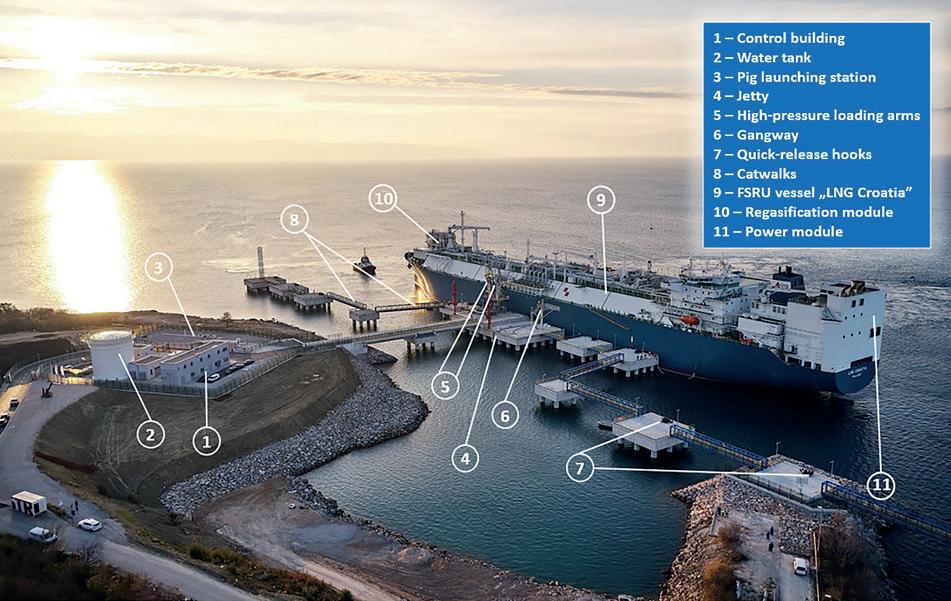
Figure 2. Basic overview of the main elements of the Terminal.
Table 1. Main technical characteristics of the LNG Terminal
Total storage capacity of FSRU vessel (m3) 140 206
Maximum LNG regasification capacity (m3/h) 451 840
Minimum LNG regasification capacity (m3/h) 60 000
Total LNG regasification capacity (billion m3/y) 2.6
Maximum transfer capacity from LNG carrier (m3/h)
Maximum operating pressure of the pipeline (bar)
Capacity of LNG carriers capable of berthing at the Terminal (m3) 8000
100
3500 - 266 000
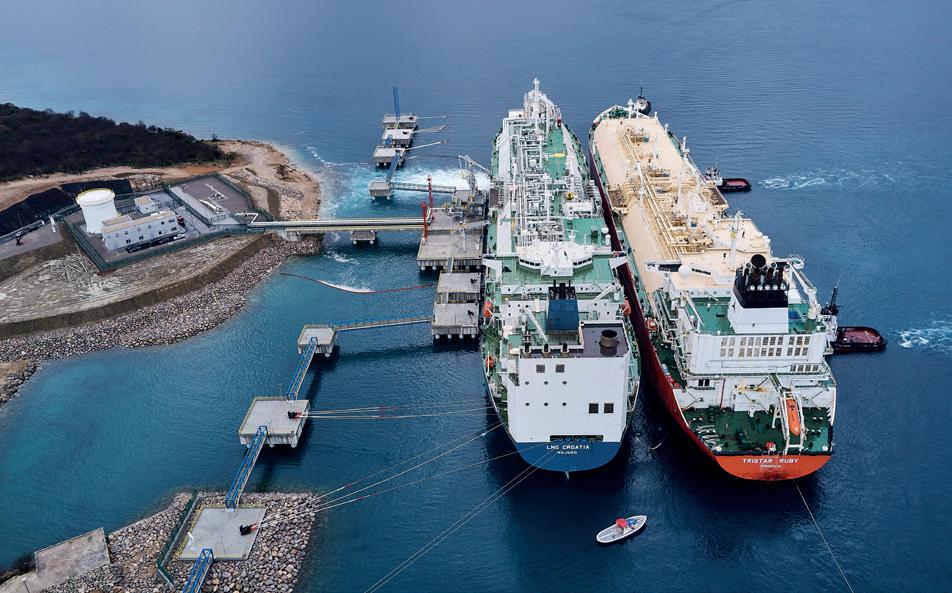
Figure 3. Arrival of the first LNG carrier to the Terminal – Tristar Ruby.
The onshore part of the Terminal
The main infrastructure of the Terminal, apart from the mentioned FSRU vessel, consists of a jetty that is built on reinforced concrete pillars (piles). The berth itself consists of several elements that are connected into a functional unit with the main task of enabling safe mooring of the FSRU vessel, continuous and uninterrupted communication with the shore, and reliable send-out of natural gas from the FSRU vessel to the onshore part. At the same time, the task of the jetty is the indirect acceptance of the LNG carrier, which is moored laterally to the FSRU vessel during the transfer of LNG. The jetty itself is designed to be able to accept a wide range of vessels, from small scale feeder vessels to the largest LNG carriers, i.e. Q-Max vessels. On the central part of the jetty, i.e. the jetty head, high-pressure loading arms that connect the gas line between the FSRU vessel and shore part of the Terminal are located. Through the high-pressure loading arms which are located in the central part of the jetty, and then over the gas pipeline that is laid along the entire length of the access bridge, natural gas is transported to the onshore part of the Terminal. On the head of the jetty, in addition to high-pressure loading arms, there is also firefighting equipment and other auxiliary equipment necessary for safe and operational functioning of the Terminal. A set of breasting and mooring dolphins located on both sides of the jetty head, on which quick release hooks and fenders are installed, form the Terminal’s mooring system. The mooring ropes provide a connection between the FSRU vessel (and LNG carrier) and the shore. They are strong enough and at the same time sufficiently elastic to enable natural oscillations in the movement of the FSRU vessel along with the sea surface. With the help of the built-in mooring system, in case of danger, the release of the FSRU vessel can be carried out in a safe and fast way.
On the onshore part of the Terminal, auxiliary facilities are located, without which the safe operation of the Terminal and thus the reliable send-out of natural gas to transmission system would not be possible. The control building, as a central facility of the shore part, is an administrative headquarter that ensures 24/7 continuous operational supervision of the entire Terminal and management of the Terminal through the control system. The auxiliary rooms of the control building serve to accommodate the instrumentation and electrical equipment of the Terminal. The fire water pump station together with the fire water tank and the built-in hydrant network provides fire protection to the Terminal area. From the aspect of protection and security of the Terminal and prevention of entry of
unauthorised persons, at the entrance of the Terminal there is a jetty guard house, while the Terminal itself is surrounded by a double fence. The security service and continuous video surveillance ensure a high level of security in the entire area of the Terminal.
The pig launching station as a technological facility in the service of maintenance and cleaning of the high-pressure connection pipeline, is the entry point of the pipeline through which the Terminal is connected to the Omišalj gas hub, owned by the Croatian gas transmission system operator. The pig launching station at the Terminal and the Omišalj gas hub are connected with a high-pressure gas pipeline. The pipeline is constructed of seamless API 5L steel pipes with a nominal dia. of 1000 mm, with total length of 4.2 km and a maximum operating pressure of 100 bar. The entire length of the pipeline is under ground and is connected to above-ground facilities at its start and end points. The main function of the connecting high-pressure gas pipeline is to transfer natural gas from the Terminal to the Omišalj gas hub, where natural gas is delivered to the gas transmission system of the Republic of Croatia.
The Terminal is connected to the public water supply system via a PEHD pipeline with a nominal dia. of 90 mm in a total length of 2.4 km. Its main purpose is the supply of drinking water for the sanitary needs of the Terminal and for the filling of the fire-fighting water tank.
Conclusion
The LNG Terminal represents a modern solution that allows a safe and reliable supply of natural gas to the gas transmission system of the Republic of Croatia. The onshore part of the Terminal provides support to the FSRU vessel in terms of safety and operational capabilities. The FSRU vessel itself, from the aspect of safety and environmental protection, is equipped with the most modern systems according to industry standards, whereby the Terminal fulfills its purpose with minimal impact on the environment. In this way, the Terminal is providing quality co-existence with the local community.
The onshore part of the Terminal and the FSRU vessel form an interconnected unit that represents one of the most important energy projects, both for the Republic of Croatia and for Central and Southeast Europe. From the beginning of its commercial operation until the 30 September 2021, (by the end of gas year 2020/2021), the Terminal has sent out over 1.11 billion m3 of natural gas to the gas transmission system. Considering the efficiency and reliability of the Terminal, it is expected that it will continue to operate for many years, all with the aim of secure and reliable gas supply while increasing the energy independence of the Republic of Croatia.
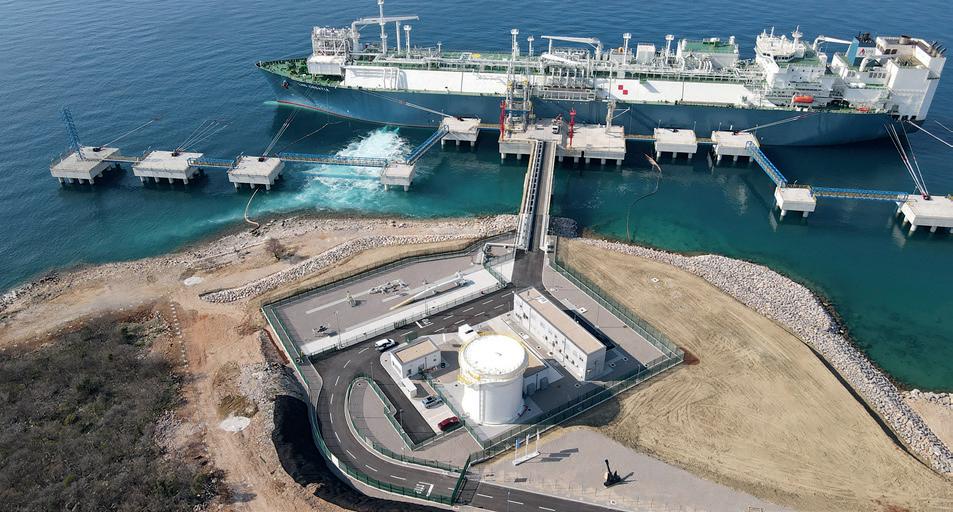
Figure 4. Jetty with auxiliary facilities.
The Gas Experts since 1980
THE GAS EXPERTS Innovations for Greener Shipping
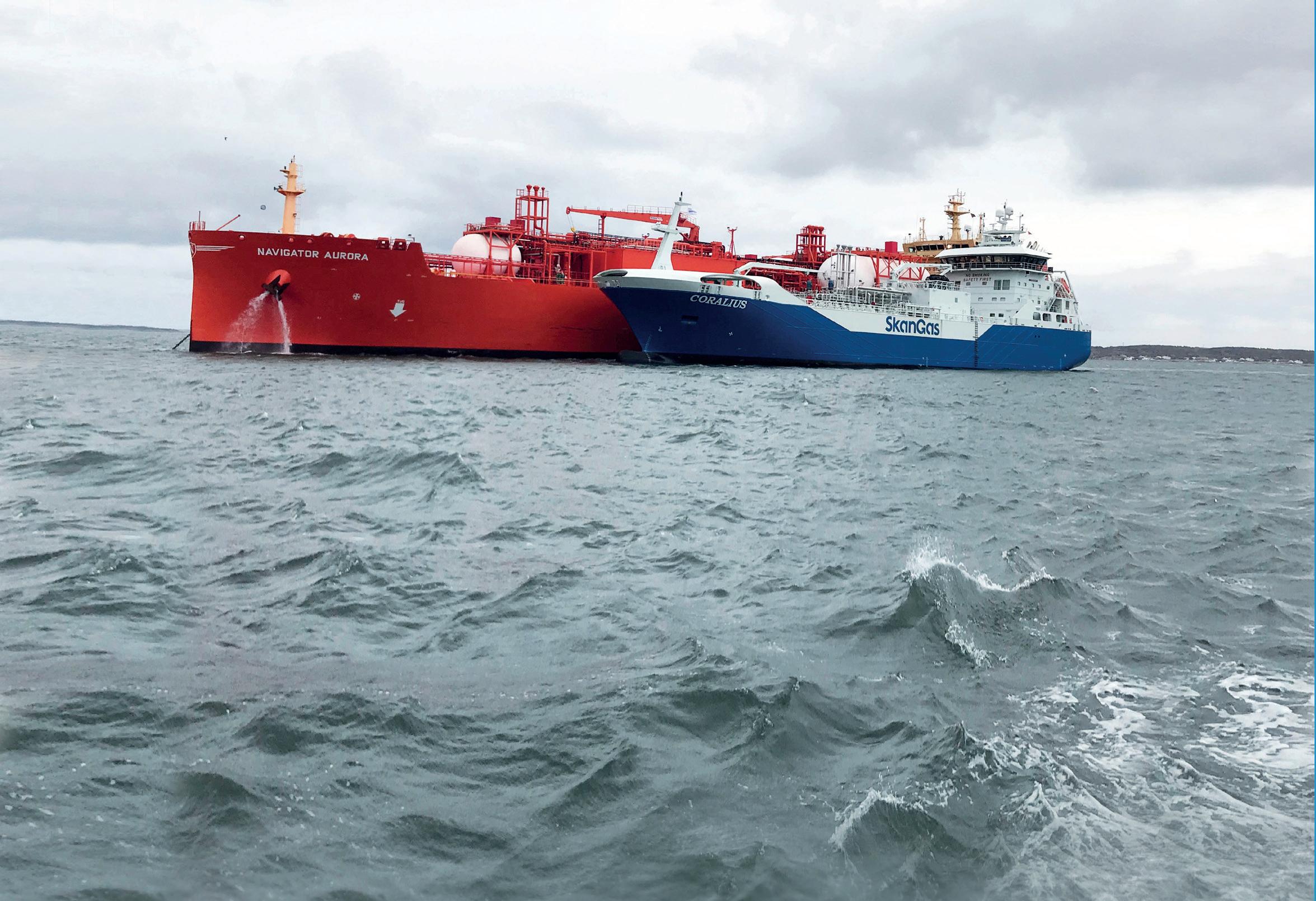
TGE Marine Gas Engineering is the world’s leading engineering contractor for small LNG vessels and fuel gas systems.
Our reference of cargo systems for small LNG carriers and LNG bunker vessels cover the range from 5,000 m³ to 30,000 m³, all with IMO Type C tanks. LNG fuel gas systems are suited for all types of engines. TGE Marine is your best partner for all aspects of the LNG marine supply chain and alternative fuels.
LNG Fuel Gas Storage Tanks LNG Fuel Gas Systems for 2-and 4-stroke Engines LNG FSRUs LNG Bunker Solutions LNG/Ethylene/LPG Carriers
The Story behind the picture.
LNG fuel
Bunkering
Transport
Storage-Tanks










